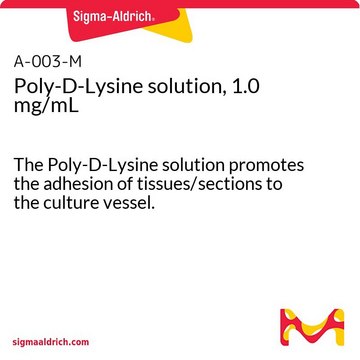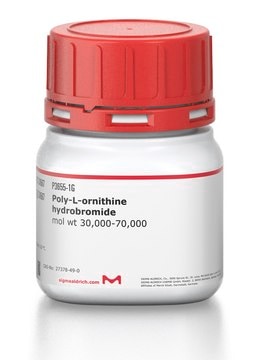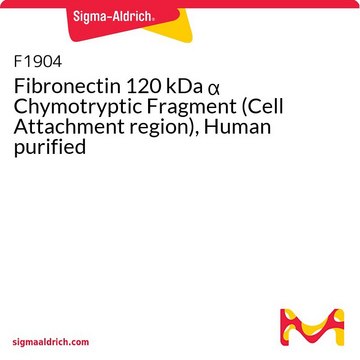S5171
Human Fibronectin
formulated with recombinant human fibronectin fragment III-C expressed in E. coli and fibronectin from human plasma, liquid, 2 mg/mL, suitable for cell culture
Synonyme(s) :
sFN
About This Item
Produits recommandés
Nom du produit
Superfibronectin from human plasma, solution, BioReagent, suitable for cell culture
Source biologique
human
Niveau de qualité
Produit recombinant
expressed in E. coli
Gamme de produits
BioReagent
Forme
solution
Poids mol.
~235-270 kDa
Conditionnement
pkg of 5 mg
Technique(s)
cell culture | mammalian: suitable
Couverture de surface
1 μg/cm2
Numéro d'accès UniProt
Conditions d'expédition
ambient
Température de stockage
2-8°C
Informations sur le gène
human ... FN1(2335)
Application
Composants
Attention
Notes préparatoires
Code de la classe de stockage
10 - Combustible liquids
Classe de danger pour l'eau (WGK)
WGK 2
Point d'éclair (°F)
Not applicable
Point d'éclair (°C)
Not applicable
Faites votre choix parmi les versions les plus récentes :
Certificats d'analyse (COA)
Vous ne trouvez pas la bonne version ?
Si vous avez besoin d'une version particulière, vous pouvez rechercher un certificat spécifique par le numéro de lot.
Déjà en possession de ce produit ?
Retrouvez la documentation relative aux produits que vous avez récemment achetés dans la Bibliothèque de documents.
Les clients ont également consulté
Articles
An experiment to directly compare three methods of lentiviral transduction of Jurkat cells was conducted in order to determine the method that yields the greatest transduction efficiency.
Fibronectin (FN) is a multifunctional, extracellular plasma glycoprotein produced by hepatocytes that circulates at near micromolar concentration and assembles into extracellular matrix fibrils at cell surfaces along with locally produced cellular FN.
Cancer stem cell media, spheroid plates and cancer stem cell markers to culture and characterize CSC populations.
Extracellular matrix proteins such as laminin, collagen, and fibronectin can be used as cell attachment substrates in cell culture.
Protocoles
Dilute fibronectin to the desired concentration. Optimum conditions for attachment are dependent on cell type and application. The typical coating concentration is 1 – 5 ug/cm2.Fibronectin coating protocol, products, and FAQs.
Notre équipe de scientifiques dispose d'une expérience dans tous les secteurs de la recherche, notamment en sciences de la vie, science des matériaux, synthèse chimique, chromatographie, analyse et dans de nombreux autres domaines..
Contacter notre Service technique









